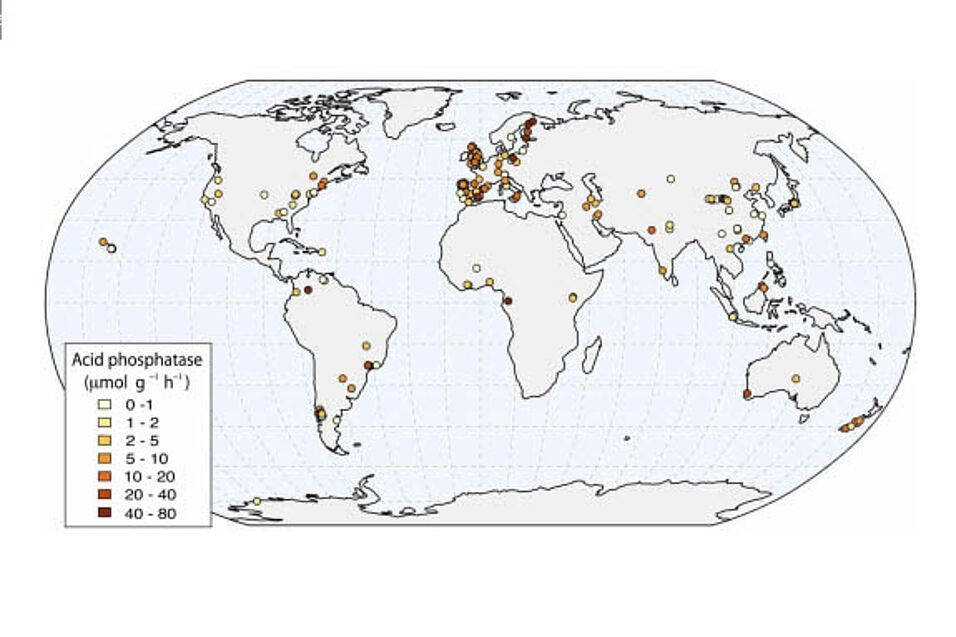01.05.2017
Soil phosphatase levels strongly control the biotic pathways of phosphorus (P), an essential element for life, which is often limiting in terrestrial ecosystems. We investigated the in uence of climatic and soil traits on phosphatase activity in terrestrial systems using metadata analysis from published studies. This is the rst analysis of global measurements of phosphatase in natural soils. Our results suggest that organic P (Porg), rather than available P, is the most important P fraction in predicting phosphatase activity. Structural equation modeling using soil total nitrogen (TN), mean annual precipitation, mean annual temperature, thermal amplitude and total soil carbon as most available predictor variables explained up to 50% of the spatial variance in phosphatase activity.
In this analysis, Porg could not be tested and among the rest of available variables, TN was the most important factor explaining the observed spatial gradients in phosphatase activity. On the other hand, phosphatase activity was also found to be associated with climatic conditions and soil type across di erent biomes worldwide. The close association among di erent predictors like Porg, TN and precipitation suggest that P recycling is driven by a broad scale pattern of ecosystem productivity capacity.
Link:
Staff:

